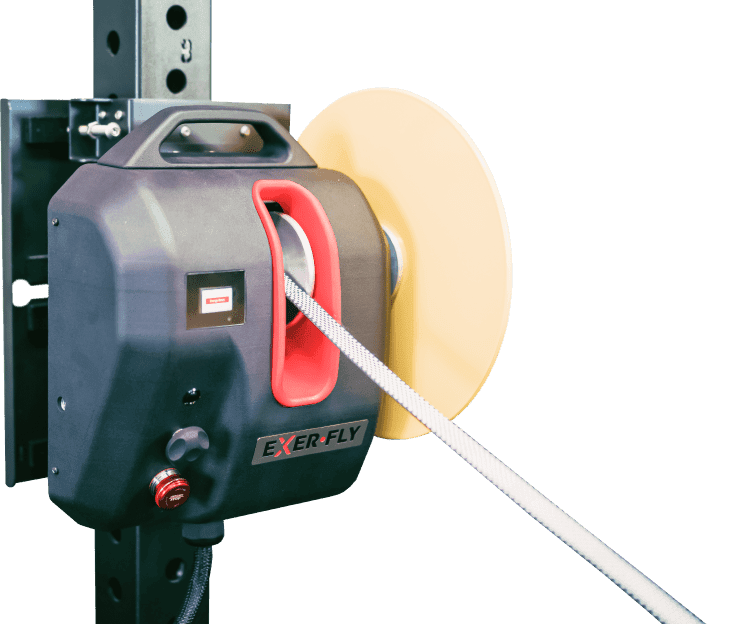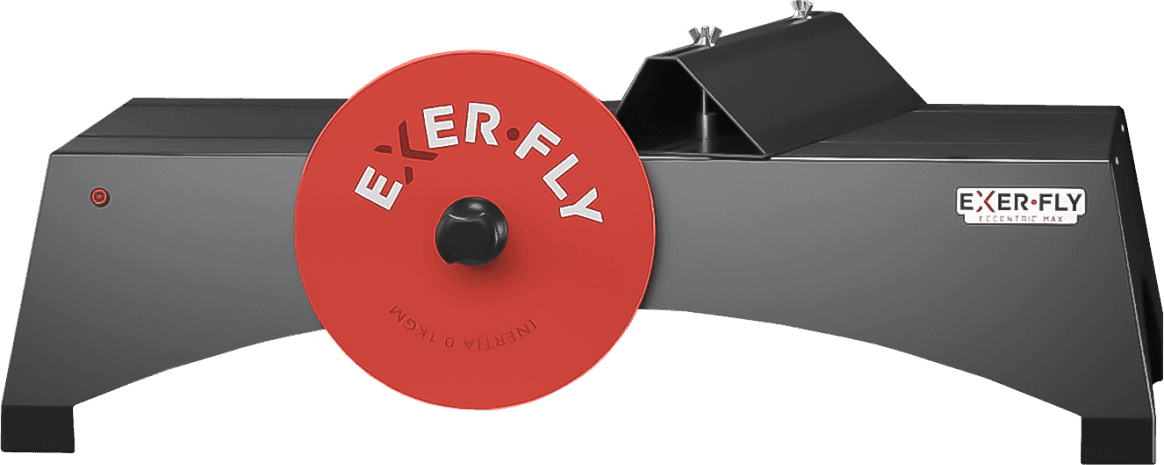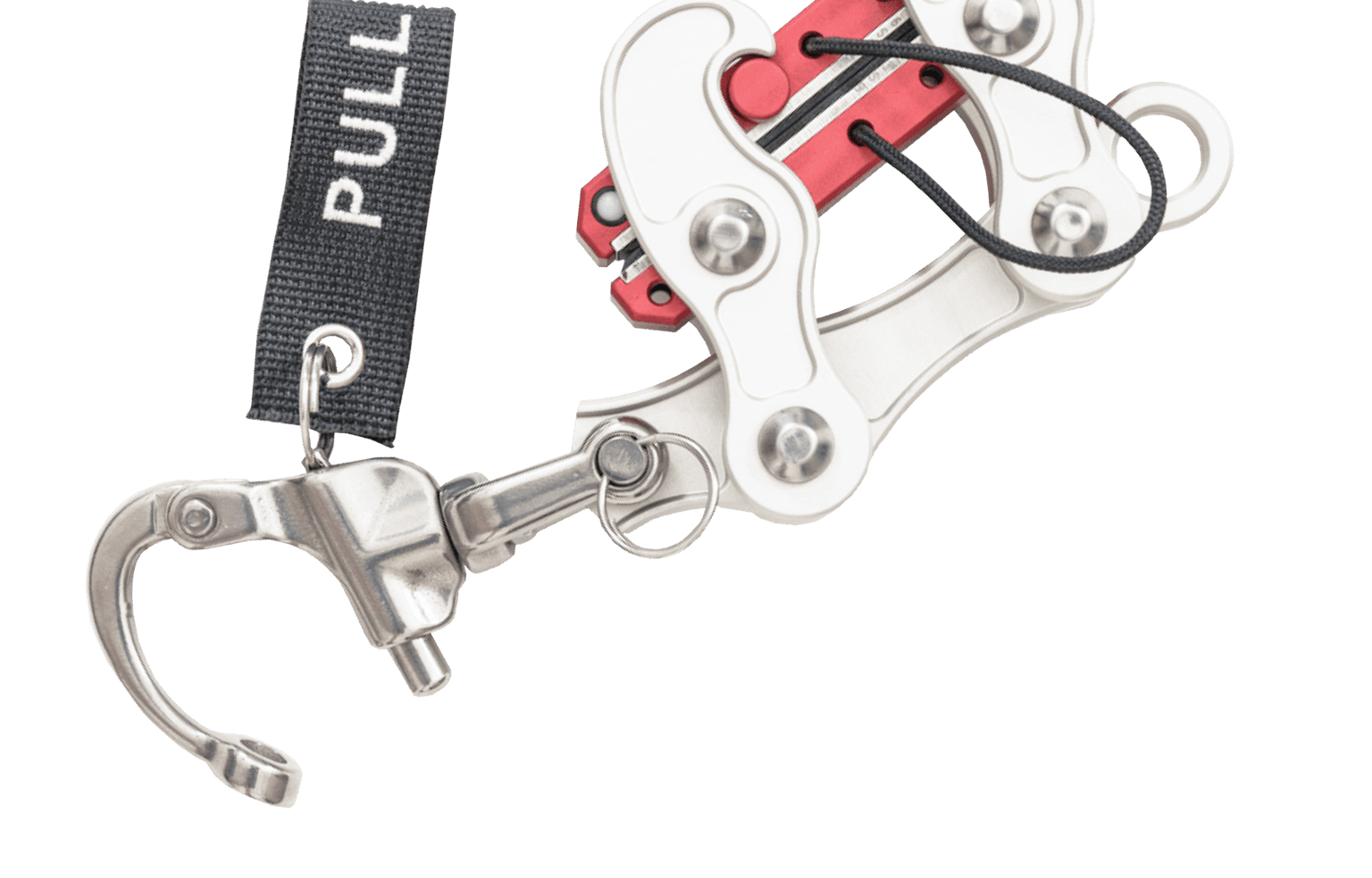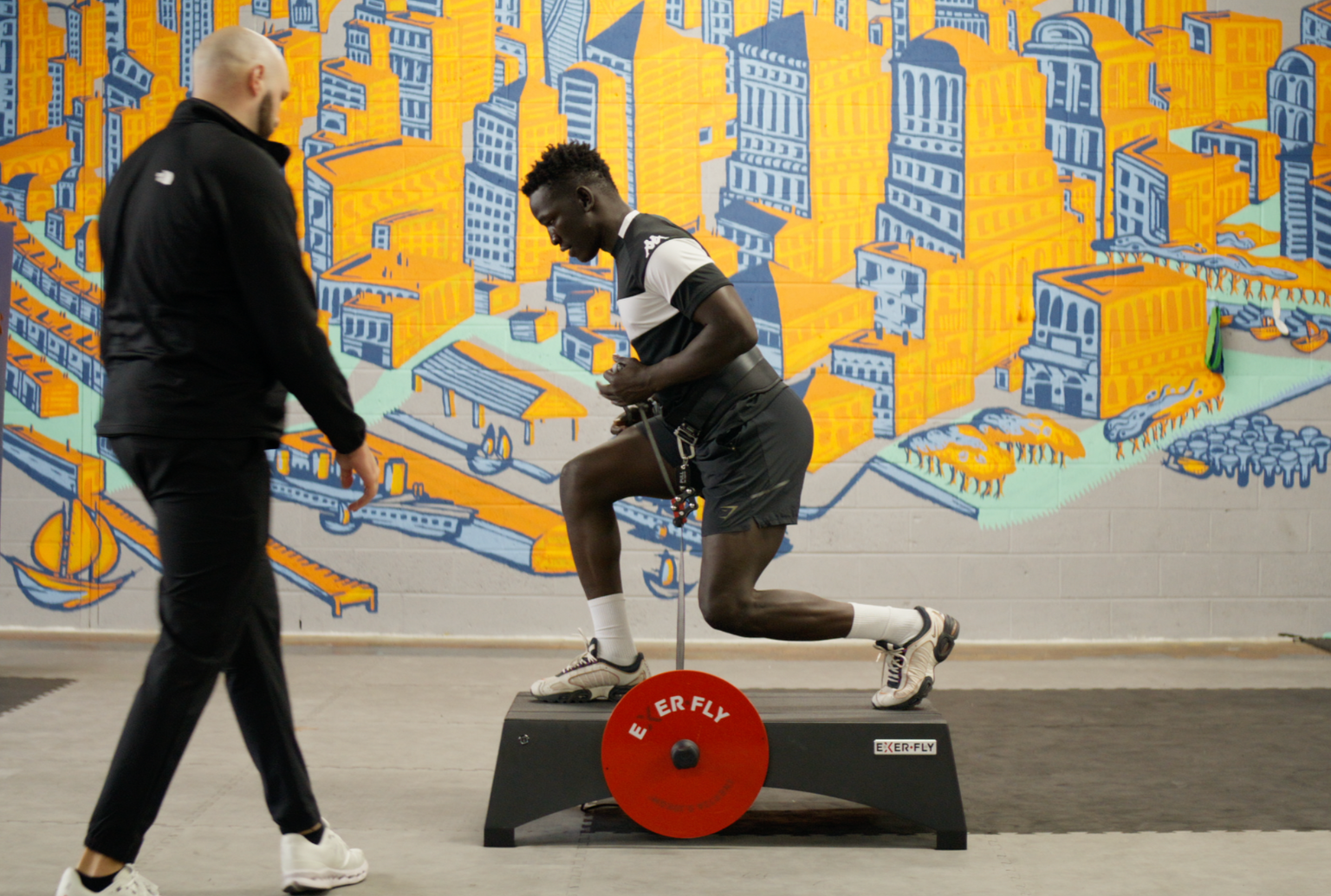
Programming Strategies for Flywheel Resistance Training
Introduction
Flywheel resistance training (FRT) allows for an adaptable resistance which can be tailored to targeted outcomes. Yet many athletes and coaches, being unsure of where to begin in programming, fall into the trap of believing it is only effective for high reps and high-volume flywheel workouts, largely because many studies have used such protocols [1]. Some researchers have prescribed lower volumes per exercise; however, they utilized multiple flywheel exercises in a single session which increased the total FRT session volume [2,3,4]. This further adds to the misconception, which limits the use of flywheel training to certain parts of the season (off-season) and undermines its potential across various training phases.
In reality, FRT can be programmed similarly to traditional barbell or resistance training, allowing for a comprehensive approach to athletic development. By leveraging the metrics provided by the Exerfly App — such as force, acceleration, and velocity—coaches can tailor their programs to meet specific training goals effectively. The flywheel's accommodating resistance ensures that athletes are challenged throughout the full range of motion. Implementing full range of motion movements with flywheels with delayed braking will theoretically allow for much slower speeds and eccentric outputs, which can be beneficial for hypertrophy or strength outcomes. Progressing to specific joint angles and specific braking strategies (rapid braking) for more sport specific exposure in training. (See Blog - Deceleration in Sport: Putting on the Brakes with Exerfly) Additionally, the incorporation of flywheel devices with a motor for eccentric overload can further enhance training outcomes across different phases.
Warm-Up Reps vs. Working Reps
When discussing rep schemes in flywheel resistance training, it is important to distinguish between warm-up reps and working reps. A typical set of flywheel resistance training often begins with a few warm-up reps to build momentum. These warm-up reps are lighter in intensity and are designed to get the flywheel moving, setting the stage for the high effort working reps that follow.
The number of warm-up reps required can vary depending on the focus of the training session. For example, when the goal is to achieve higher outputs, such as in speed or power-focused sessions, more warm-up reps may be needed. This is because the flywheel needs to reach a higher momentum to match the athlete's explosive efforts during the working reps. In such cases, using 3 warm-up reps can be beneficial to ensure the flywheel is moving at a sufficient speed to provide the necessary resistance for peak power output.
Hypertrophy Phase
FRT can be effectively utilized for hypertrophy by focusing on moderate to high repetitions with controlled eccentric and concentric phases. Schoenfeld discusses the mechanisms of muscle hypertrophy, identifying mechanical tension, metabolic stress, and muscle damage as primary factors contributing to muscle growth [5]. FRT aligns well with these mechanisms by providing continuous tension throughout the movement, inducing significant metabolic stress, and allowing for controlled eccentric actions that lead to muscle damage and subsequent growth. The continuous resistance provided by the flywheel ensures constant muscle engagement, promoting these hypertrophic adaptations and can be tracked by monitoring constant tempo (through velocity) and force during training.
Metrics to Monitor:
- Force: Ensuring adequate force production for each repetition
- Velocity: Moderate to slow velocities and/or high volumes to ensure there is sufficient time under tension
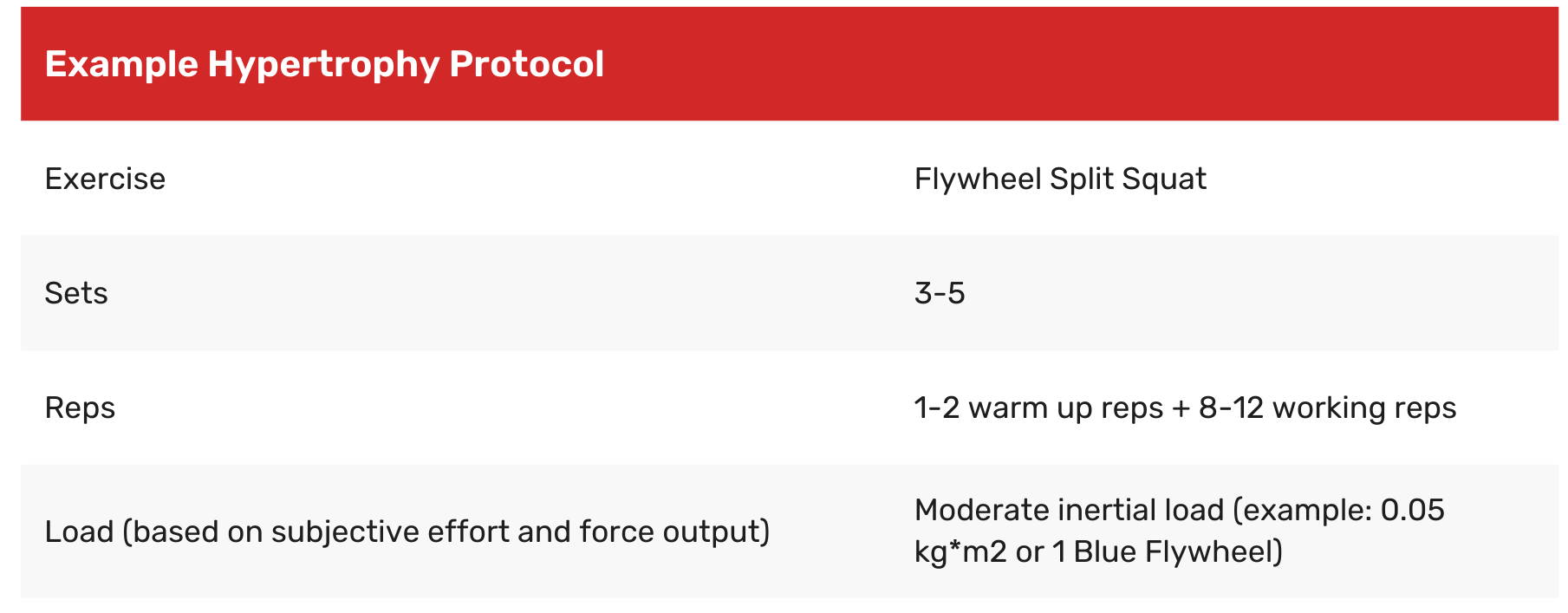
Strength Phase
The strength phase aims to increase maximal force production [6]. FRT is particularly beneficial in this phase due to its ability to provide high forces during both concentric and eccentric actions. Additionally, the concept of maximal intent in producing force output is crucial for maximizing strength gains by increasing motor unit recruitment [6]. This is also important in FRT as the unique resistance profile increases the eccentric loading resulting in improved mechanical function, morphological adaptations, and neuromuscular adaptations [6].
Metrics to Monitor:
- Force: Maximal force output should be prioritized, with efforts to progressively increase it over the training period.
- Acceleration: Tracking acceleration can help ensure explosive concentric actions.
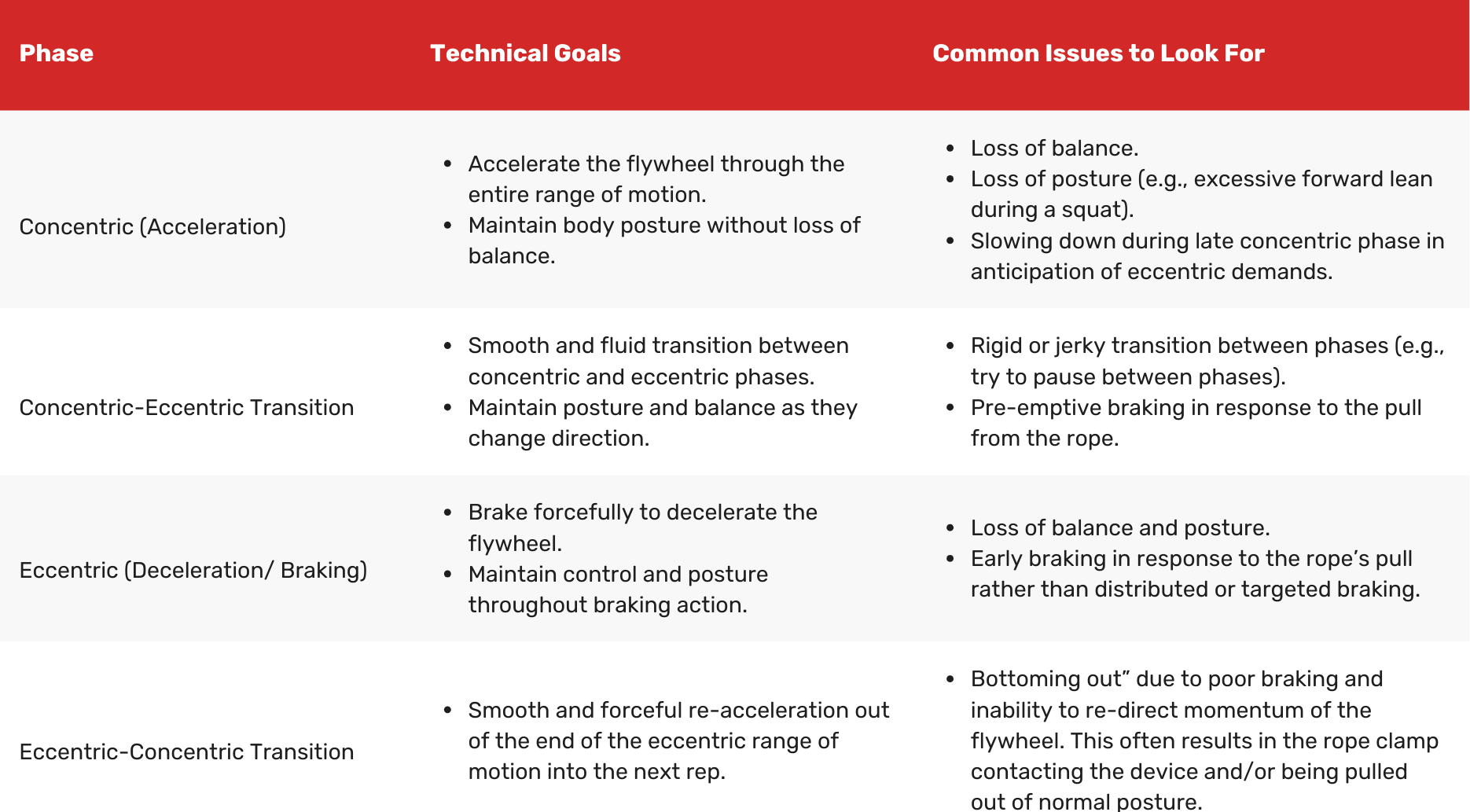
Power Phase
Developing power requires the ability to produce force quickly. Turner et al. (2020) delved into the mechanical underpinnings of power development, discussing the force-time and force-velocity curves and their implications for training [7]. They emphasized the importance of rapid force production and the ability to produce high levels of force in a short amount of time. FRT proves its value as it can be effectively used to develop power by focusing on high-velocity movements with moderate to high loads. This strategy involves targeting loads that allow for maximal power production by optimizing the relationship between the resistance provided by the flywheel and the speed of movement [7]. However, another effective strategy is the more polarized approach, which focuses on training at the extreme ends of the force-velocity spectrum. This involves separate sessions that either emphasize high force at low velocities (heavy resistance) or high velocity at low forces (light resistance) [7]. By training at these extremes, the athlete’s ability to produce both maximum force and maximum speed is enhanced, which in turn pulls up the overall power output that occurs somewhere in the middle of the force-velocity curve. The continuous and adaptable resistance ensures that athletes can maintain high velocities even under load, which is crucial for power development. The use of a motor for eccentric overload can further enhance these adaptations by increasing the resistance during the eccentric phase, leading to greater muscle recruitment and neural adaptations.
Metrics to Monitor:
- Velocity: High velocities during concentric actions are crucial for power development.
- Power: Ensuring maximal force is being generated quickly
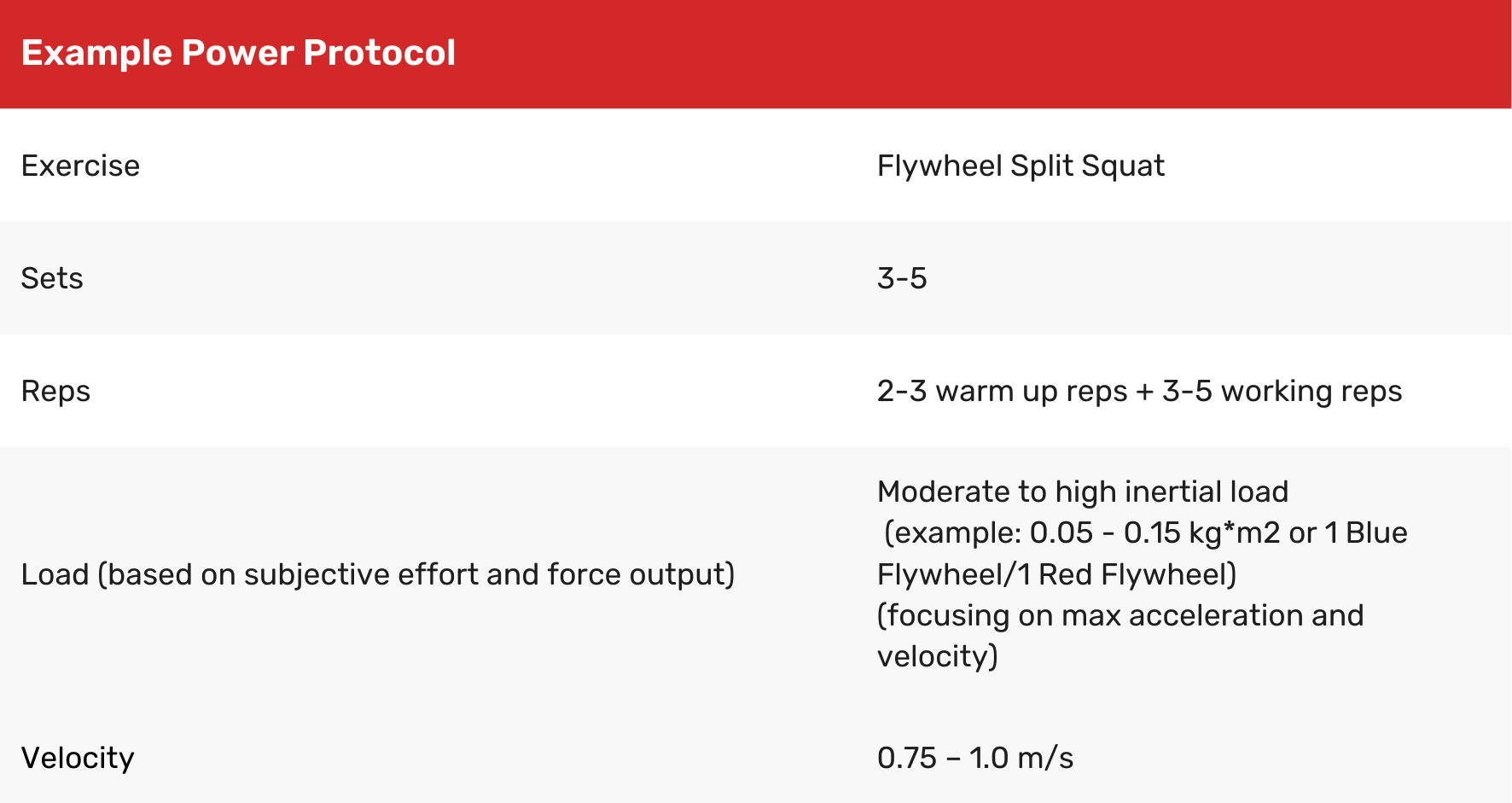
Conclusion
FRT offers a versatile and effective approach to athletic development, capable of addressing various training goals from hypertrophy to strength to power. By understanding and utilizing the metrics provided by the Exerfly App, coaches can tailor their programs to optimize outcomes for their athletes. FRT programming can be implemented in the same manner as barbell or traditional resistance training, making it suitable for any phase of a season or periodized program.
References
- Chaabene, H., Markov, A., Prieske, O., Moran, J., Behrens, M., Negra, Y., Ramirez-Campillo, R., Koch, U., & Mkaouer, B. (2022). Effect of Flywheel versus Traditional Resistance Training on Change of Direction Performance in Male Athletes: A Systematic Review with Meta-Analysis. International journal of environmental research and public health, 19(12), 7061.
- Monajati, A., Larumbe-Zabala, E., Goss-Sampson, M., & Naclerio, F. (2021). Injury Prevention Programs Based on Flywheel vs. Body Weight Resistance in Recreational Athletes. Journal of strength and conditioning research, 35(Suppl 1), S188–S196.
- Tous-Fajardo, J., Gonzalo-Skok, O., Arjol-Serrano, J. L., & Tesch, P. (2016). Enhancing Change-of-Direction Speed in Soccer Players by Functional Inertial Eccentric Overload and Vibration Training. International journal of sports physiology and performance, 11(1), 66–73.
- Sabido, R., Hernández-Davó, J. L., Botella, J., Navarro, A., & Tous-Fajardo, J. (2017). Effects of adding a weekly eccentric-overload training session on strength and athletic performance in team-handball players. European journal of sport science, 17(5), 530–538.
- Schoenfeld B. J. (2010). The mechanisms of muscle hypertrophy and their application to resistance training. Journal of strength and conditioning research, 24(10), 2857–2872.
- Suchomel, T. J., Nimphius, S., Bellon, C. R., & Stone, M. H. (2018). The Importance of Muscular Strength: Training Considerations. Sports medicine (Auckland, N.Z.), 48(4), 765–785.
- Turner, A., Comfort, P., McMahon, J., Bishop, C., Chavda, S., Read, P., Mundy, P., & Lake, J. (2020). Developing Powerful Athletes, Part 1: Mechanical Underpinnings. Strength and conditioning journal, 42(3), 30-39.


